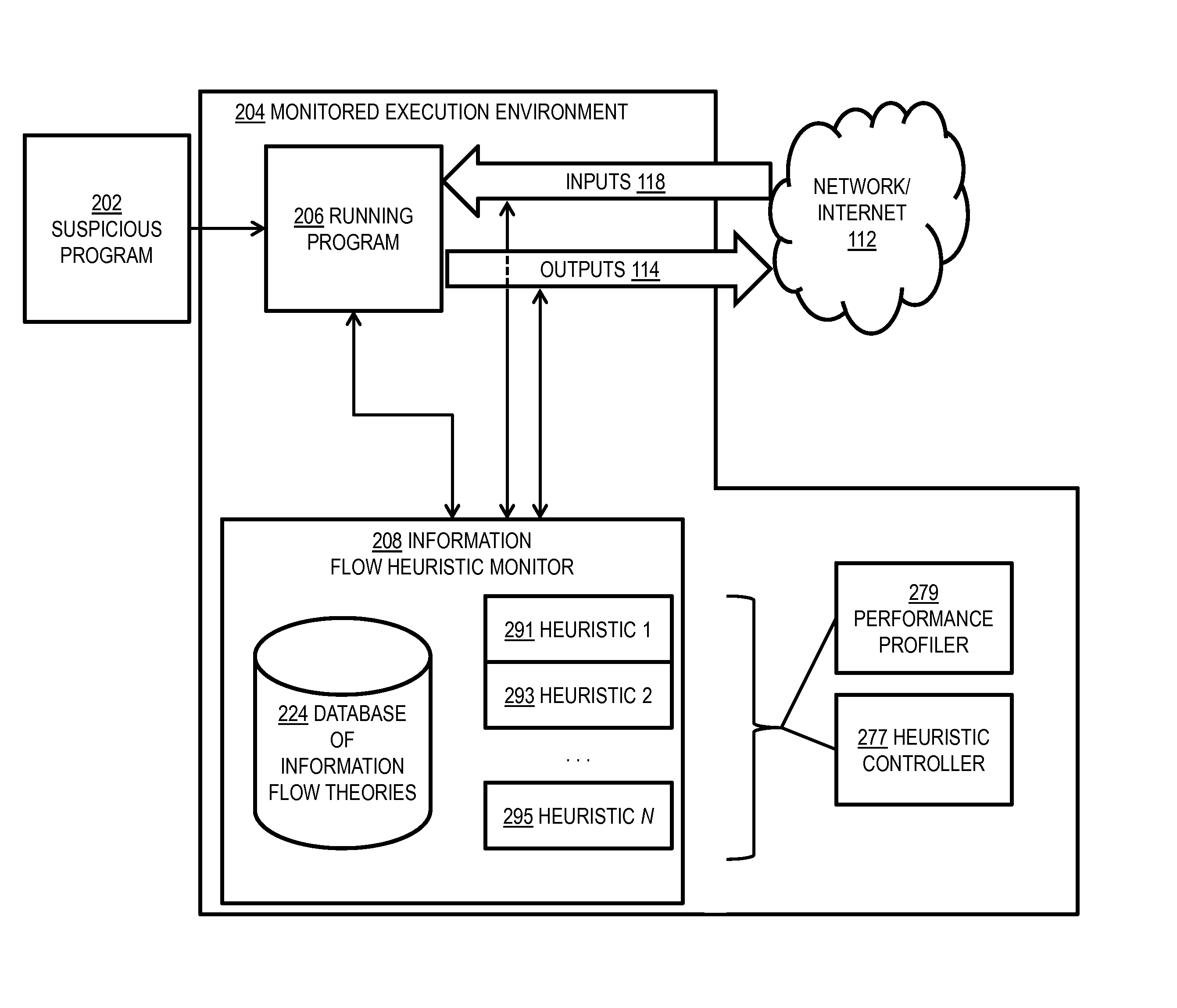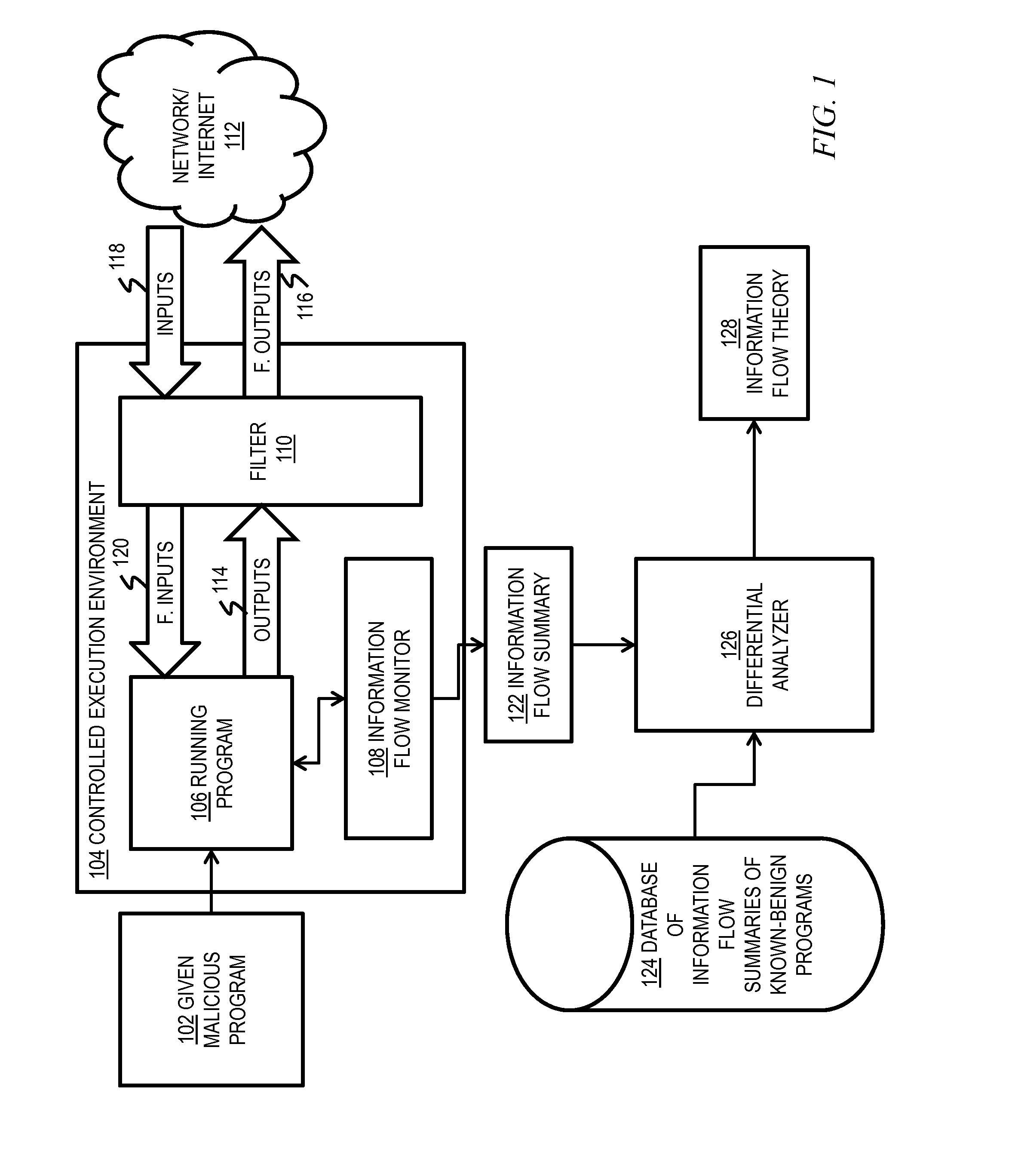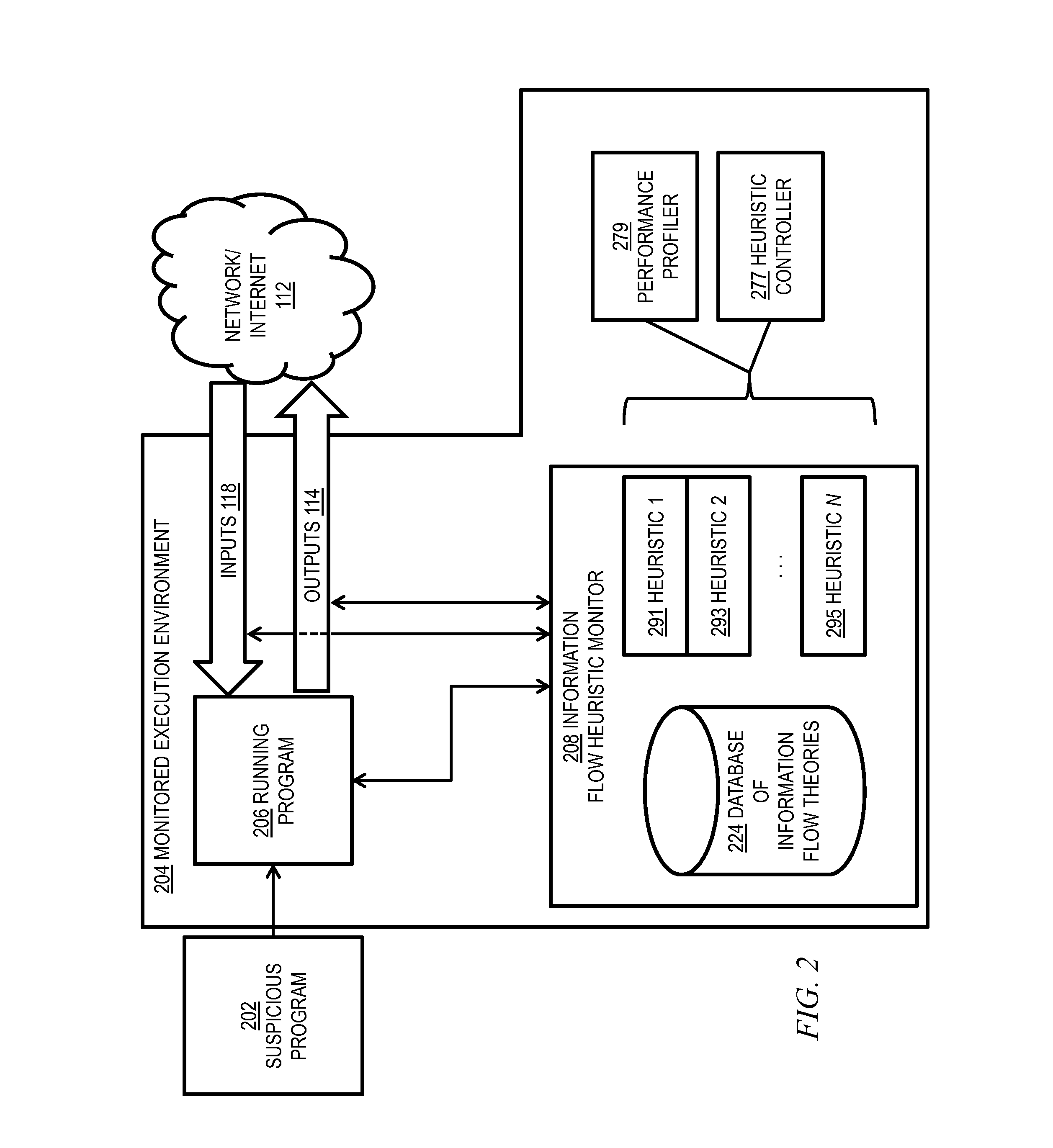Malware detection via network information flow theories
a network information flow and malware technology, applied in the field of cybersecurity, can solve problems such as the danger of botnets, and achieve the effects of facilitating an action, facilitating an action, and facilitating an action
- Summary
- Abstract
- Description
- Claims
- Application Information
AI Technical Summary
Benefits of technology
Problems solved by technology
Method used
Image
Examples
Embodiment Construction
[0023]As noted above, cybersecurity remains a significant concern in today's interconnected world, as attackers become increasingly sophisticated in their malicious actions. Most malware attacks result in a distributed system, formed by the infected hosts actually used to perform the malicious activity, the support hosts (who might be infected or otherwise under the control of the attacker), and the machine(s) directly used by the attacker to control the malware network. Botnets are one example of such distributed systems. Spyware and advanced persistent threats (APTs) each form similarly distributed systems. For example, spyware is often used to collect sensitive information from infected machines and send it to one or more central servers, which in turn propagate the sensitive information to (human or not) agents that use this information to obtain access to more systems or to financial instruments.
[0024]Botnets are particularly dangerous because they can be used to launch large-s...
PUM
 Login to View More
Login to View More Abstract
Description
Claims
Application Information
 Login to View More
Login to View More - R&D
- Intellectual Property
- Life Sciences
- Materials
- Tech Scout
- Unparalleled Data Quality
- Higher Quality Content
- 60% Fewer Hallucinations
Browse by: Latest US Patents, China's latest patents, Technical Efficacy Thesaurus, Application Domain, Technology Topic, Popular Technical Reports.
© 2025 PatSnap. All rights reserved.Legal|Privacy policy|Modern Slavery Act Transparency Statement|Sitemap|About US| Contact US: help@patsnap.com



